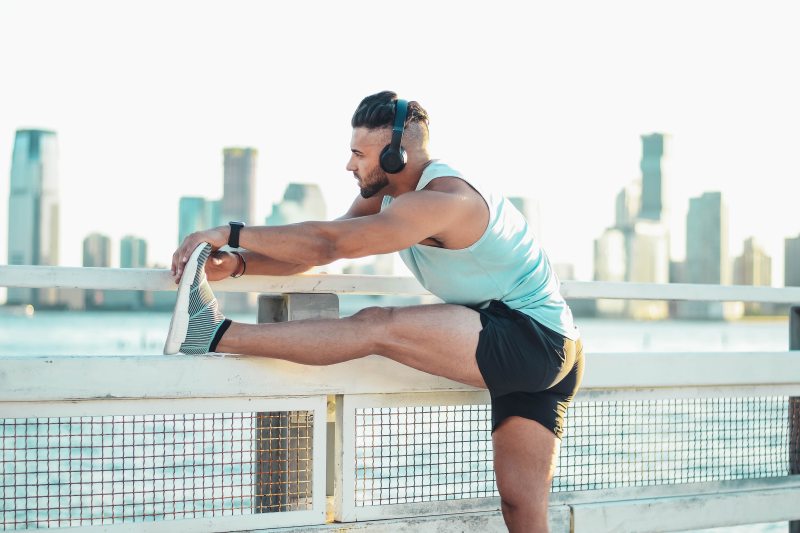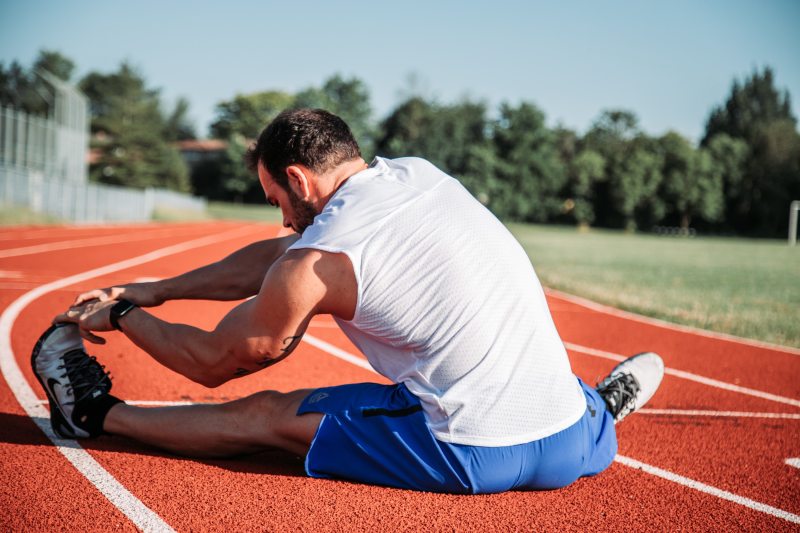When it comes to working out, some things are nearly universal — we all love the satisfying feeling after completing a hard workout. We’re filled with pride and confidence when we break a personal record or achieve something we didn’t know was possible. However, other parts of fitness are somewhat divisive. For example, some people love running, while others despise it; similarly, some people dread their workouts in general while others count down the minutes until work is over and they can hit the gym.
Another aspect of fitness that tends to be rather polarizing is stretching: Some people love to stretch, while others will only be seen stretching or working on flexibility in the rare times when they are feeling extreme tightness or fending off an injury. However, whether you love it or hate it, stretching offers quite a few benefits and can be an important part of a well-rounded
Types of Stretching

When many people think of “stretching,” they picture someone standing up and pulling one foot towards their butt to stretch the quads or some other iteration of a classic static stretch. However, the world of stretching has evolved quite a bit since the days of holding basic static stretches in PE class. There are several different types of stretching, each with its primary purpose and set of benefits.
- Dynamic stretching: Dynamic stretching is a more functional form of stretching. It involves continuous movement patterns that extend the range of motion around a joint to stretch the muscles. For example, someone preparing to run may do hip circles or exaggerated lunges to stretch the hamstrings and glutes before running. Dynamic stretching increases blood flow to the tissues and helps warm up muscles prior to exercise.
- Static stretching: Static stretching involves holding a position toward the end range of motion where you feel a stretch. Stretches are usually held for 15 to 30 seconds, though some people stretch for longer. There are actually two subtypes of passive stretching. In passive stretches, some sort of external factor applies force to increase the intensity of the stress. This may include a partner, a wall, or a rope under tension. In active stretching, the individual applies added force themselves using muscles opposing the stretched muscle. For example, lying on your back and lifting one leg straight up towards the ceiling until you feel a stretch in your hamstring — and then continually contracting your hip flexors to hold this position — is an example of active stretching. Static stretches tend to be most useful after a workout as part of a cool-down routine.
- PNF stretching: PNF stretching, which stands for proprioceptive neuromuscular facilitation, involves implementing one of three primary techniques to increase range of motion by combining stretching with contraction (activation) of the muscle. This type of stretching is thought to provide superior improvements in range of motion with static stretches.
Benefits of Stretching
Oftentimes, we want to maximize our time in the gym and squeeze the most out of our workout in the limited time we have. For that reason, many athletes seem to opt to get in an extra set of squats or another mile on a run, as the expense of time before wind after the workout for stretching. However, doing so may not be the fast track to better fitness you hope it may be as forgoing stretching robs your body of the numerous benefits of stretching.
1. Stretching Increases Range of Motion
Range of motion refers to how much mobility or movement you have in a joint. In general, the more range of motion you have, the more limber and flexible you’ll feel. Tight muscles and connective tissues prevent joints from moving at their end ranges of motion, which causes feelings of stiffness. For example, if your glutes and hip flexors are tight, the range of motion around your hip will be limited and your walking and running stride will be shorter and less efficient.
Stretching activates sensory receptors (such as muscle spindles and Golgi tendon organs {GTOs}) in muscles, tendons, and ligaments. These receptors then send a signal to the spinal cord. The parasympathetic nervous system responds by sending a signal back to the tissues to relax. As muscle fibers and tendons relax, the tissues lengthen, pulling less forcefully on joints and allowing more “give” or motion about the joint.
2. Stretching Reduces the Risk of Injury

Mobility work, such as dynamic stretching, increases circulation and helps warm up your muscles before a workout. It prepares muscles and connective tissues for hard work and increases the range of motion in joints. This minimizes the risk of injury to joints such as knees and ankles from otherwise dangerous sudden movements or high forces by ensuring adequate perfusion of muscles and mobility in joints.
3. Stretching Can Improve Posture
Our lives are unfortunately designed for developing muscle imbalances, as many of the things we do on a daily basis work against optimal alignment and ergonomics. For example, many of us hunch forward to using our phones or computers, creating tight chest muscles and overstretched upper backs. Taking time to stretch postural muscles, spinal muscles, pecs, abs, and shoulders can improve posture and encourage the lengthening of muscles we chronically hold tight.
4. Stretching Alleviates Pain
Stiff and tight muscles can cause pain, particularly if they are restricting movement. Stretching can restore compromised flexibility and reduce pain and stiffness. For example, studies have found that regularly stretching your hamstrings helps reduce chronic low back pain and improves your quality of life.
5. Stretching Can Improve Performance

Stretching prior to a workout can improve physical performance in the workout. However, there’s a crucial caveat: Dynamic stretching has been found to enhance performance by static stretching prior to a workout may actually inhibit force, strength, and power. Therefore, be sure to save static stretches for your cool down, and focus on a comprehensive dynamic stretching routine as part of your warm-up to prepare your body for hard work.
6. Stretching Reduces Muscle Soreness
Studies have found that incorporating a stretching routine into the cool-down portion of a workout can ease muscle soreness and minimize the extent of delayed-onset muscle soreness (DOMS). This is thought to be due to the enhanced circulation and nutrient transport brought on by stretching and the prevention of stiffness and contraction of tissues.
7. Stretching Eases Stress
Much in the same way that stretching eases muscle tension, so too does it ease mental or emotional tension. Most people report feeling calmer, more relaxed, and happier after stretching. As a mindfulness modality, stretching helps clear the mind, build the mind-body connection, and center your breath. Stretching may also reduce levels of cortisol, a stress hormone.
Editors' Recommendations
- Worried about a rotator cuff injury? The exercises to avoid (and what you should do instead)
- Why strength training should be an essential part of your gym routine
- 8 of the best full-body exercises to get you in shape
- 9 important health benefits of magnesium you need to know about
- 8 incredible ways you can benefit from cinnamon




